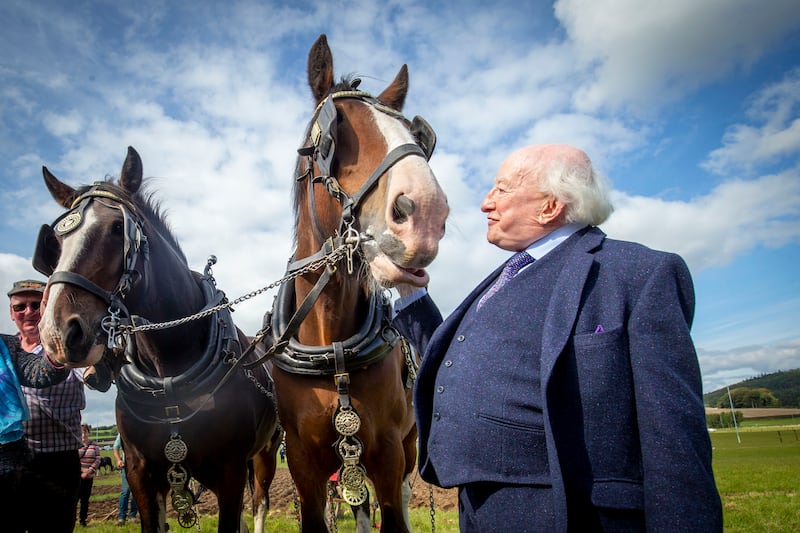Before the exhibition stands, the food stalls, the politicians and the celebrities, there was just the ploughing.
You could spend your time wandering around the vast temporary town that is the National Ploughing Championships and never see what the whole event is supposed to be about.
The competitors are confined by necessity to the periphery of the site. They need a lot of land of their own.
The championships were cancelled along with everything else in 2020. They went ahead in 2021, but few outside the ploughing community noticed. For the vast majority of the 300,000 people who attend, the National Ploughing Championships is not about the ploughing.
READ MORE
But it is for those involved in the horse ploughing. Their site is surrounded by one of the largest car parks and you would not notice it unless you knew where to find it.
Many competitors look back fondly on last year when there were no crowds, no queues and the horses weren’t disturbed by the raucous sound of country and Irish drifting from a tent near the championship site as they are this year.
Something eternal
There is something eternal about the horse ploughing and President Michael D Higgins, who visited for the first time since 2019, made a beeline for it.
Zwena McCullough who was guiding Paddy the Irishman, a rather reluctant cob down a row, said 2021 was “absolutely fantastic – we had no traffic jams, we could stay in bed longer, you could drive back and forth. There is nothing like it. Our lives were so much easier.”
The plough Paddy was pulling was first bought in 1937 for £11. It is still going though, like Trigger’s broom, a lot of it looks like it was replaced many times.
[ ‘Dying art’ of ploughing sees revival as Kilkenny woman seeks three-in-a-rowOpens in new window ]
NPC managing director Anna Mae McHugh wondered many times over the last three years if the crowds would return. She got her answer on Tuesday.
Everything comes back to the ploughing, she states. It is a timely reminder, she says, that without the plough we would all starve.

Mood of farmers
“You turn the soil, it is tilled, it is sowed, it goes to the miller and comes back as flour or bread, baking and all the rest.”
All the main exhibitors are back this year. This includes government departments, the big retailers, banks, insurance companies, machinery manufacturers, charities and religious groups. The site boasts 37km of walkway yet still feels crowded. The swell of people reaches its height at lunchtime before fading away in the afternoon.
The mood among farmers at the moment is mixed. On the one hand, beef and dairy prices are as high as they have ever been. Tillage farmers have had a good harvest. On the other hand, pig farmers are suffering though prices are starting to get into a more stable situation.
Minister for Agriculture Charlie McConalogue said the war in Ukraine was pushing up the price of energy which was also affecting the price of feed and fertiliser. There have been government supports for tillage farmers and for beef and sheep farmers in relation to fodder.
Dairy farmer Paul O’Brien said farmers were in a place where a lot was happening and there were multiple challenges into the future. Cutting emissions will be the biggest challenge long term but, in the meantime, feed prices have gone from €300 to €500 a ton and fertiliser from €380 to €900-€1,000 a ton in the last 18 months.
“These are key things that make up agriculture and food production. The reality is that agricultural inflation was never the same as normal inflation – 10 per cent against 40 per cent in the agricultural sector. That will mean that farmers will have to receive more money for their produce. That’s an unfortunate consequence of where we are at,” he said.…













